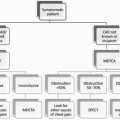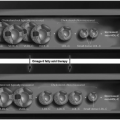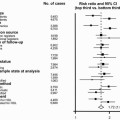Study |
Population |
Adjusted for |
End point |
Comparison |
RR or OR (95%
confidence interval) |
Studies that show a significant association after multivariate adjustment (p < 0.05) |
AFCAPS/TexCAPS |
Men, women |
Age, sex, smoking, HTN, parental history of CAD, lipid levels |
MI, CHD death, UA |
Quartiles (per one-quartile increase) |
1.17 (1.03-1.33) |
ARIC |
Men, women |
Age, sex, race, smoking, HTN, DM, LDL, HDL |
Incident CHD |
Tertiles (3 vs. 1) |
1.72 (1.24-2.39) |
BRHS |
Men |
Age, town, smoking, BP, TC, HDL, TG, BMI, occupation, housing tenure, marital status, car ownership, childhood socioeconomic factors |
MI, CHD death |
Tertiles (3 vs. 1) |
2.13 (1.38-3.28) |
Caerphilly + Speedwell |
Men |
Age, area, smoking, BMI, DBP, TC, evidence of ischemia at baseline |
MI, CHD death |
Quintiles (5 vs. 1) |
1.72 (1.14-2.58) |
CHS |
Men, women aged >65 |
Age, sex, race, field center, HTN, DM, smoking, BMI, waist circumference, TC, HDL, aspirin use |
MI, CHD death |
CRP >3.0 mg/L vs. <1.0 mg/L |
1.45 (1.14-1.86) |
Edinburgh |
Men, women |
Age, sex, subclinical disease (ABI), pack-years smoking, DM, BMI, TC/HDL ratio, physical activity |
MI, stroke, revascularization |
Tertiles (3 vs. 1) |
1.62 (1.11-2.38) |
EPIC-Norfolk |
Men, women |
Age, sex, smoking, DM, BMI, SBP, LDL, HDL |
CAD |
Quartiles (4 vs. 1) |
1.66 (1.31-2.12) |
FHS (high-sensitivity CRP assay) |
Men, women |
Age, sex, smoking, TC/HDL ratio, DM, SBP, use of antihypertensives |
CVD |
CRP >3.0 mg/L vs. <1.0 mg/L |
1.74 (1.15-2.63) |
Honolulu |
Men |
Age, smoking, alcohol, TC, HTN, DM, BMI, physical activity index |
MI |
Quartiles (4 vs. 1) |
1.6 (1.1-2.2) |
HPFUS |
Men |
Age, smoking, month of blood sampling, parental history of CHD, alcohol, physical activity, TC/HDL ratio, BMI, DM, HTN |
MI, CHD death |
Quintiles (5 vs. 1) |
2.55 (1.40-4.65) |
Kuopio |
Men |
Age, year of exam, smoking, LDL, HDL, SBP, use of antihypertensives, diet, fasting insulin, fasting glucose, waist girth, exercise, alcohol, socioeconomic status |
CVD death |
Tertiles (3 vs. 1) |
1.71 (1.16-2.54) |
MONICA-Augsburg |
Men |
Age, survey, BMI, smoking, alcohol, physical activity, SBP, TC/HDL ratio, parental history of MI, history of DM |
MI, CHD death |
Tertiles (3 vs. 1) |
1.89 (1.28-2.77) |
PHS |
Men |
Age, BMI, DM, history of HTN, family history of CAD |
MI |
Quartiles (4 vs. 1) |
2.6 (1.6-4.4) |
PRIME |
Men |
Age, smoking, DM, HTN, LDL, HDL, TG |
MI, CHD death |
Tertiles (3 vs. 1) |
2.16 (1.26-3.72) |
PROSPER |
Men, women aged >70 |
Age, sex, randomized treatment, country, current and past smoking, SBP, DBP, use of antihypertensives LDL, HDL, TG, DM, BMI |
MI, CHD death, stroke |
Tertiles (3 vs. 1) |
1.51 (1.17-1.95) |
Reykjavik |
Men, women |
Age, sex, year of enrollment, smoking, SBP, TC, TG, BMI, FEV1, DM, socioeconomic status |
MI, CHD death |
Tertiles (3 vs. 1) |
1.45 (1.25-1.68) |
SOF |
Women aged >65 |
Age, HTN, LDL, HDL, DM, smoking, BMI, estrogen use, education level, clinical site |
CVD death |
Quartiles (4 vs. 1) |
8.0 (2.2-29) |
WHI |
Women |
Age, ethnicity, smoking, length of follow-up, TC/HDL ratio, BMI, history of HTN, family history of premature CAD, DM, exercise frequency, alcohol, use of HRT |
MI, CHD death |
Quartiles (4 vs. 1) |
2.1 (1.1-4.1) |
WHS |
Women |
Age, smoking, DM, BP, use of HRT |
MI, ischemic stroke, coronary revascularization, CVD death |
Quintiles (5 vs. 1) |
2.3 (1.6-3.4) |
WOSCOP |
Men |
Age, statin treatment, DM, HTN, angina, BMI, SBP, TC, LDL, HDL, TG |
MI, CHD death, revascularization |
Quintiles (5 vs. 1) |
1.49 (1.00-2.22) |
Studies that do not show a significant association after multivariate adjustment (p > 0.05) |
FHS (non-high-sensitivity assay) |
Men, women |
Age, sex, smoking, TC/HDL ratio, DM, SBP, use of antihypertensives |
MI, CHD death |
CRP >3.0 mg/L vs. <3.0 mg/L |
1.22 (0.81-1.84) |
MONICA-Augsburg |
Women |
Age, survey, BMI, smoking, alcohol, physical activity, SBP, TC/HDL ratio, parental history of MI, history of DM |
MI, CHD death |
Tertiles (3 vs. 1) |
1.35 (0.64-2.84) |
MRFIT |
Men |
Age, cigarettes smoked, DBP, HDL, LDL, TG |
MI, CHD death |
Quartiles (4 vs. 1) |
1.54 (0.96-2.50) |
Health ABC |
Men, women aged >70 |
Age, sex, race, smoking, DM, HTN, BMI, HDL, TG, albumin |
Incident CHD |
Tertiles (3 vs. 1) |
1.20 (0.83-1.75) |
Hoorn |
Men, women |
Age, sex, impaired glucose tolerance, DM, HTN, smoking, TC, HDL, TG, IHD, PAD, obesity |
CVD death |
Tertiles (3 vs. 1) |
1.32 (0.52-3.35) |
Iowa 65+ |
Men, women aged >65 |
Age, sex, prevalent CVD, smoking, DM, BMI |
CVD death |
Quartiles (4 vs. 1) |
1.8 (0.9-3.6) |
NHS |
Women |
Age, smoking, month of blood sampling, fasting status, parental history of CHD, alcohol, physical activity, TC/HDL ratio, BMI, DM, HTN, use of HRT |
MI, CHD death |
Quintiles (5 vs. 1) |
1.61 (0.84-3.07) |
Quebec |
Men |
Age, smoking, history of DM, SBP, medication use at baseline, BMI, LDL, HDL, TC/HDL ratio |
MI, CHD death, angina, coronary insufficiency |
Halves (2 vs. 1) |
1.1 (0.7-1.6) |
Rotterdam |
Men, women aged >55 |
Age, sex, current smoking, BMI, HTN, DM, family history of early MI, TC, HDL |
MI |
Quartiles (4 vs. 1) |
1.2 (0.6-2.2) |
SMILE |
Men |
Age, smoking, alcohol, DM, obesity, SBP, DBP, TC, HDL, TG |
MI |
Quintiles (5 vs. 1) |
1.4 (0.9-2.1) |
Studies: AFCAPS/TexCAPS, Air Force/Texas Coronary Atherosclerosis Prevention Study; ARIC, Atherosclerosis Risk in Communities; BRHS, British Regional Heart Study; Caerphilly, Caerphilly Heart Study; CHS, Cardiovascular Health Study; Edinburgh, Edinburgh Artery Study; EPIC-Norfolk, European Prospective Investigation into Cancer Norfolk Study; FHS, Framingham Heart Study; Health ABC, Dynamics of Health, Aging and Body Composition Study; Honolulu, Honolulu Heart Study; Hoorn, Hoorn Study; HPFUS, Health Professionals Follow Up Study; Iowa 65+, Iowa 65+ Rural Health Study; Kuopio, Kuopio Ischaemic Heart Disease Risk Factor Study; MONICA-Augsburg, Monitoring Cardiovascular Disease Augsburg Cohort Study; MRFIT, Multiple Risk Factor Intervention Trial; NHS, Nurses’ Health Study; PHS, Physicians’ Health Study; PRIME, PRIME (étude prospective du l’infarctus myocarde) Study; PROSPER, Prospective Study of Pravastatin in the Elderly at Risk; Quebec, Quebec Cardiovascular Study; Reykjavik, Reykjavik Study; Rotterdam, Rotterdam Study; SMILE, Study of Myocardial Infarctions Leiden; SOF, Study of Osteoporotic Fractures; Speedwell, Speedwell Prospective Study; WHI, Women’s Health Initiative; WHS, Women’s Health Study; WOSCOP, West of Scotland Coronary Protection Study. |
AF, atrial fibrillation; BMI, body mass index; BP, blood pressure; CAD, coronary artery disease; CHD, coronary heart disease; CRP, C-reactive protein; CVD, cardiovascular disease; DBP, diastolic blood pressure; DM, diabetes mellitus; FEV1, forced expiratory volume in 1 second; HDL, high-density lipoprotein; HRT, hormone replacement therapy; HTN, hypertension; IHD, ischemic heart disease; LDL, low-density lipoprotein; MI, myocardial infarction; OR, odds ratio; RR, risk ratio; SBP, systolic blood pressure; TC, total cholesterol; TG, triglycerides; UA, unstable angina. |
Adapted from Musunuru K, Kral BG, Blumenthal RS, et al. The use of high sensitivity assays for C-reactive protein in clinical practice. Nat Clin Pract Cardiovasc Med. 2008. In press. |
|









